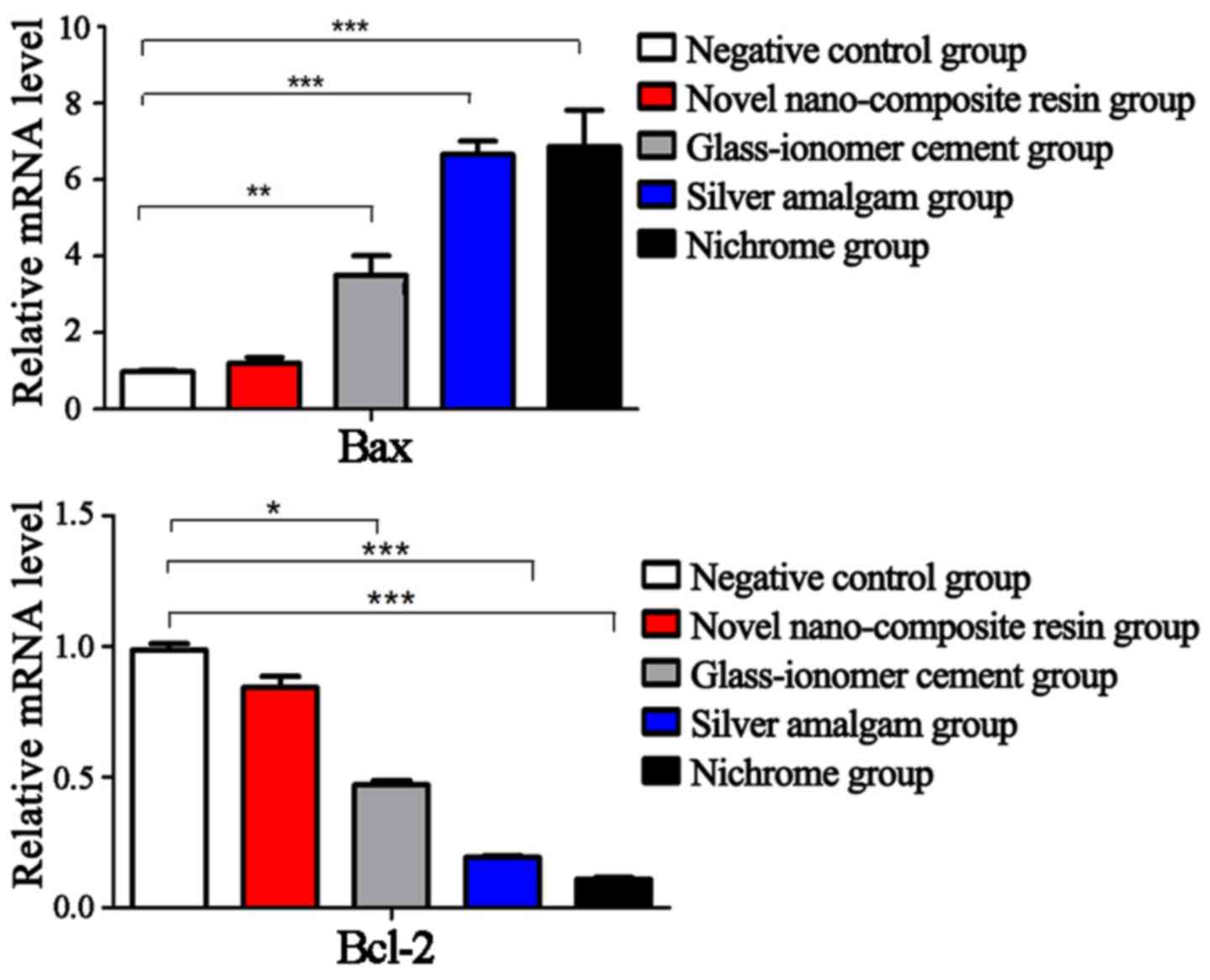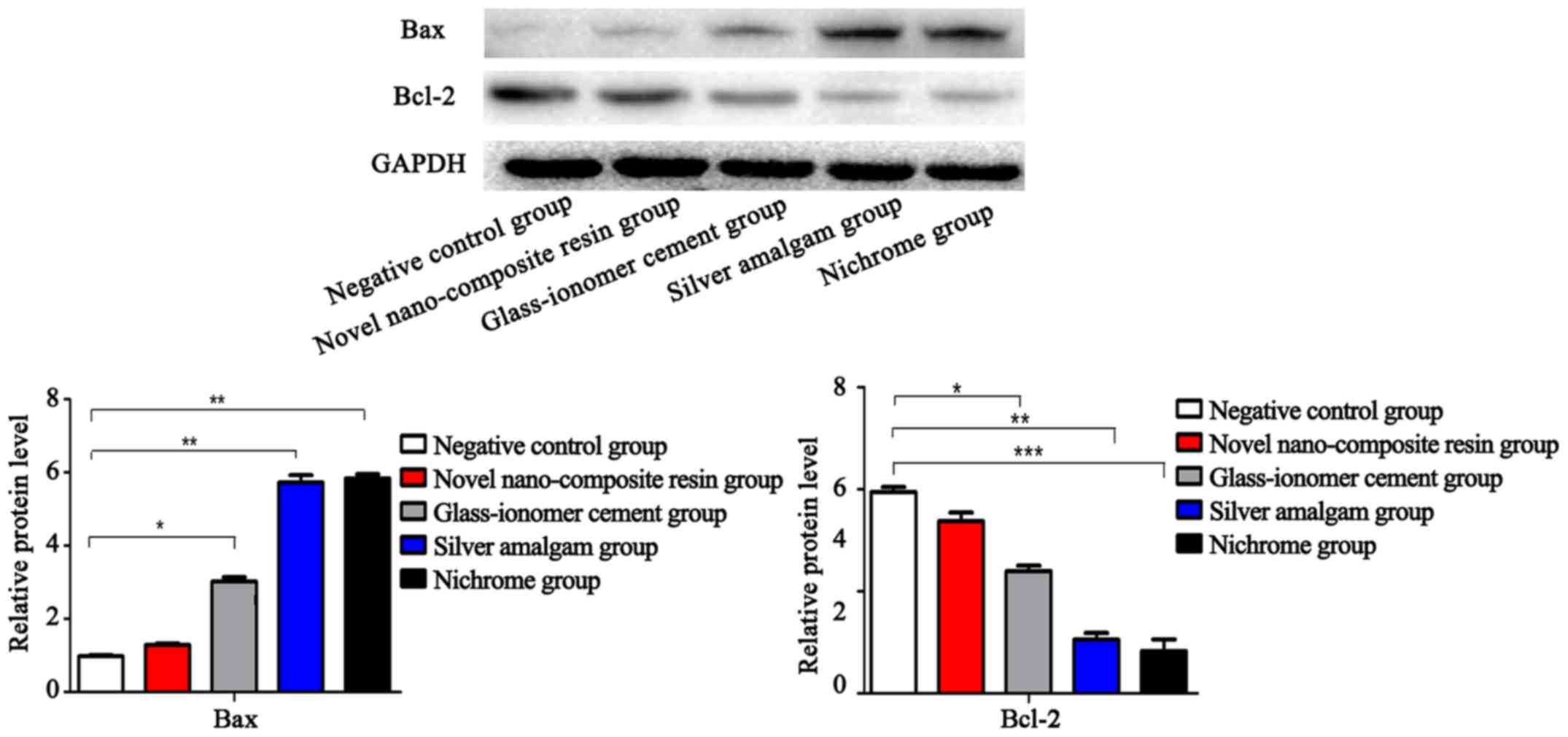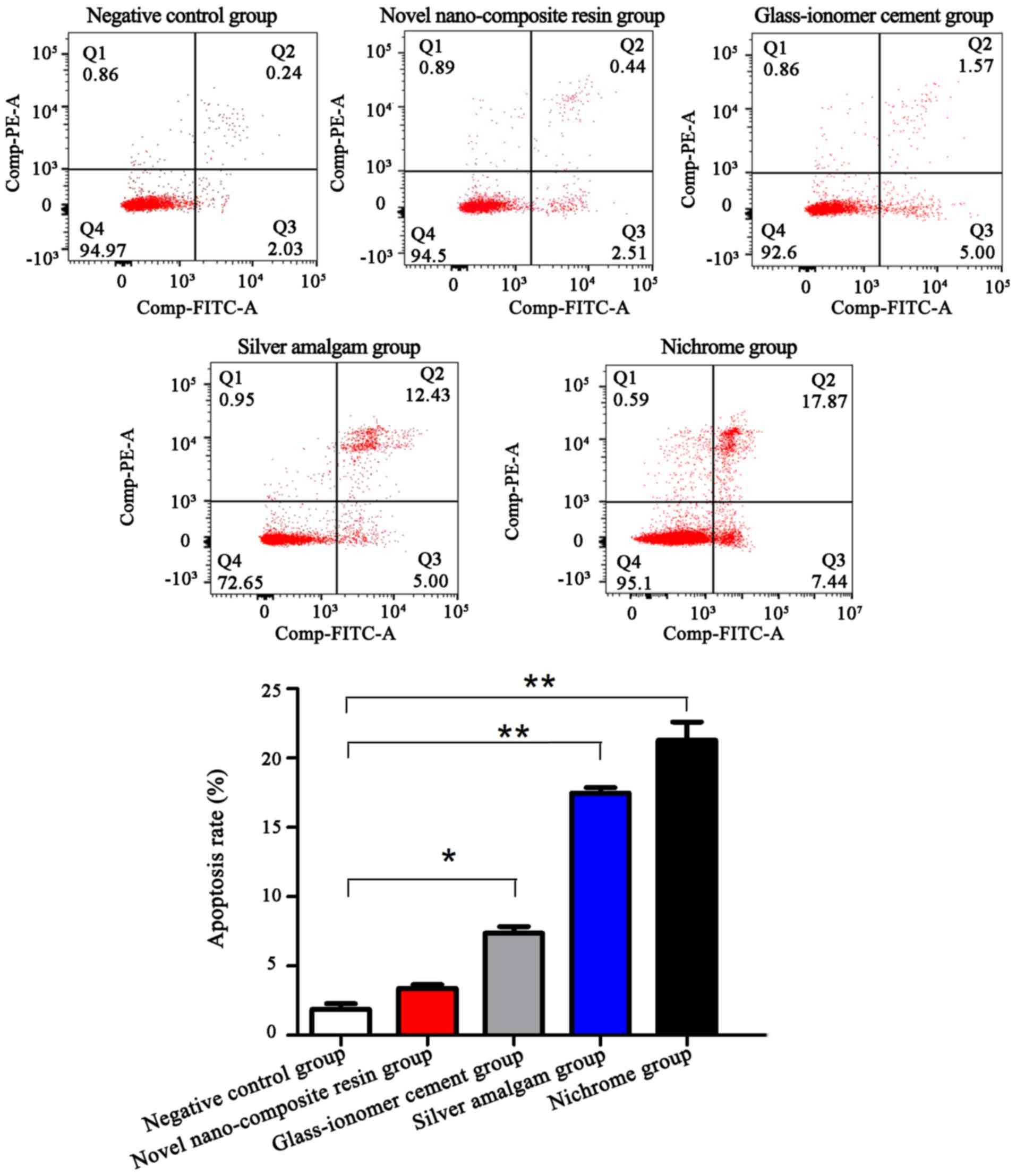|
1
|
Wang Y, He J, Li Q and Shen J: Preparation
of sodium alginate-nanohydroxyapatite composite material for bone
repair and its biocompatibility. Hua Xi Kou Qiang Yi Xue Za Zhi.
32:27–31. 2014.(In Chinese). PubMed/NCBI
|
|
2
|
Kawajiri H, Yamanami M, Mizuno T, Kanda K,
Yaku H and Nakayama Y: Feasibility of connective tissue membrane
(bio-sheet) prepared in the body as cardiovascular repair material
as a substitute for self-pericardium. Circulation.
128:A129102013.
|
|
3
|
Croll TP, Berg JH and Donly KJ: Dental
repair material: A resin-modified glass-ionomer bioactive ionic
resin-based composite. Compend Contin Educ Dent. 36:60–65.
2015.PubMed/NCBI
|
|
4
|
Cvar JF and Ryge G: Reprint of criteria
for the clinical evaluation of dental restorative materials. 1971.
Clin Oral Investig. 9:215–232. 2005. View Article : Google Scholar : PubMed/NCBI
|
|
5
|
Zhou HM, Shen Y, Wang ZJ, Li L, Zheng YF,
Häkkinen L and Haapasalo M: In vitro cytotoxicity evaluation of a
novel root repair material. J Endod. 39:478–483. 2013. View Article : Google Scholar : PubMed/NCBI
|
|
6
|
Sang Z, Liu ZY, Gu YD and Feng JN:
Evaluation and analysis on clinical effects of different dental
restorative materials. J Taishan Med Coll. 37:907–909. 2016.
|
|
7
|
Abedi G, Jahanshahi A, Fathi MH, Haghdost
IS and Veshkini A: Study of nano-hydroxyapatite/zirconia stabilized
with yttria in bone healing: Histopathological study in rabbit
model. Pol J Pathol. 65:40–47. 2014. View Article : Google Scholar : PubMed/NCBI
|
|
8
|
Wataha JC, Nelson SK and Lockwood PE:
Elemental release from dental casting alloys into biological media
with and without protein. Dent Mater. 17:409–414. 2001. View Article : Google Scholar : PubMed/NCBI
|
|
9
|
Livak KJ and Schmittgen TD: Analysis of
relative geneexpression data using real-time quantitative PCR and
the2(-Delta Delta C(T)) method. Methods. 25:402–408. 2001.
View Article : Google Scholar : PubMed/NCBI
|
|
10
|
Anusavice K, Shen C and Rawls HR:
Phillips' Science of Dental Materials. 12th edition. Saunders;
2012, View Article : Google Scholar
|
|
11
|
Feinberg M, Garcia LT, Polverini PJ, Fox
CH and Valachovic RW: The vital role of research funding in
preserving the oral health of the public and the dental profession.
J Am Dent Assoc. 146:355–356. 2015. View Article : Google Scholar : PubMed/NCBI
|
|
12
|
Mickenautsch S: Are high-viscosity
glass-ionomer cements inferior to silver amalgam as restorative
materials for permanent posterior teeth? A Bayesian analysis. BMC
Oral Health. 15:1182015. View Article : Google Scholar : PubMed/NCBI
|
|
13
|
Saghiri MA, Banava S, Sabzian MA, Gutmann
JL, Asatourian A, Ramezani GH, Garcia-Godoy F and Sheibani N:
Correlation between long-term in vivo amalgam restorations and the
presence of heavy elements in the dental pulp. J Trace Elem Med
Biol. 28:200–204. 2014. View Article : Google Scholar : PubMed/NCBI
|
|
14
|
Mickenautsch S: Retention of GIC versus
Amalgam as restorations [October 06, 2015]. J Minim Inter Dent.
9:28–30. 2016.
|
|
15
|
Chen S, Mestres G, Lan WH, Xia W and
Engqvist H: In vitro cytotoxicity of dental cements on odontoblast
cells. Presented at Towards Future Regenerative Therapies TERMIS-EU
2016 Conference. (abstract P87). 2016.http://ecmconferences.org/abstracts/2016/Collection1/c1_poster.html
|
|
16
|
Kuper NK, Montagner AF, van de Sande FH,
Bronkhorst EM, Opdam NJ and Huysmans MC: Secondary caries
development in in situ gaps next to composite and amalgam. Caries
Res. 49:557–563. 2015. View Article : Google Scholar : PubMed/NCBI
|
|
17
|
De Munck J, Van Landuyt K, Peumans M,
Poitevin A, Lambrechts P, Braem M and Van Meerbeek B: A critical
review of the durability of adhesion to tooth tissue: Methods and
results. J Dent Res. 84:118–132. 2005. View Article : Google Scholar : PubMed/NCBI
|
|
18
|
Rai R, Dinakar D, Kurian SS and Bindoo YA:
Investigation of contact allergy to dental materials by patch
testing. Indian Dermatol Online J. 5:282–286. 2014. View Article : Google Scholar : PubMed/NCBI
|
|
19
|
Stanislawski L, Soheili-Majd E, Perianin A
and Goldberg M: Dental restorative biomaterials induce glutathione
depletion in cultured human gingival fibroblast: Protective effect
of N-acetyl cysteine. J Biomed Mater Res. 51:469–474. 2000.
View Article : Google Scholar : PubMed/NCBI
|
|
20
|
Goldberg M, Stanislawski L, Bonte E,
Daniau X, Bonte E, Daniau X and Lasfargues JJ: Biocompatibility of
glass-ionomer cementsAdvances in Glass-Ionomer Cements. Davidson CL
and Mjör IA: 1st edition. Quintessence Publishing Co.; Chicago: pp.
103–120. 1999
|
|
21
|
Szep S, Kunkel A, Ronge K and Heidemann D:
Cytotoxicity of modern dentin adhesives - in vitro testing on
gingival fibroblasts. J Biomed Mater Res. 63:53–60. 2002.
View Article : Google Scholar : PubMed/NCBI
|
|
22
|
Geurtsen W, Lehmann F, Spahl W and
Leyhausen G: Cytotoxicity of 35 dental resin composite
monomers/additives in permanent 3T3 and three human primary
fibroblast cultures. J Biomed Mater Res. 41:474–480. 1998.
View Article : Google Scholar : PubMed/NCBI
|
|
23
|
Fontana M and González-Cabezas C:
Secondary caries and restoration replacement: An unresolved
problem. Compend Contin Educ Dent. 21(15–18): 21–24, 26 passim,
quiz 30. 2000.
|
|
24
|
Zhang N, Melo MA, Chen C, Liu J, Weir MD,
Bai Y and Xu HH: Development of a multifunctional adhesive system
for prevention of root caries and secondary caries. Dent Mater.
31:1119–1131. 2015. View Article : Google Scholar : PubMed/NCBI
|
|
25
|
Schwendicke F, Kern M, Blunck U, Dörfer C,
Drenck J and Paris S: Marginal integrity and secondary caries of
selectively excavated teeth in vitro. J Dent. 42:1261–1268. 2014.
View Article : Google Scholar : PubMed/NCBI
|

















